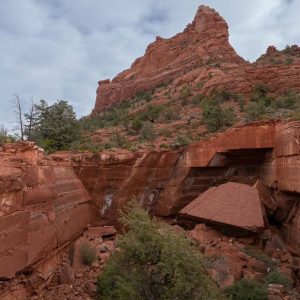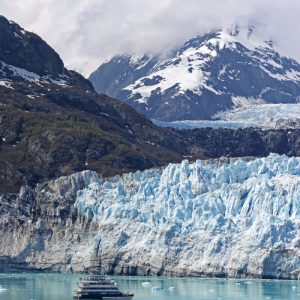Canyon de Chelly, located on the Navajo Reservation, sits atop the Defiance Plateau along the northeastern edge of Arizona. This off-the-beaten-path national monument combines spectacular scenery, ancient cliff dwellings, and a look at a traditional Navajo way of life. It’s well worth the time and effort to explore.
People have lived in Canyon de Chelly for nearly 5,000 years. A wave of groups populated the area beginning with the Archaic people, followed by the Basketmakers, the Pueblo, the Hopi and finally the Navajo.
There are several ways to explore Canyon de Chelly National Monument, a joint effort between the National Park Service and Navajo Nation. Two of the most popular are rim drives or a tour inside the canyon.
What would you rather do? Peer down into a scenic canyon from the rim drive or venture inside? If you chose being in the canyon, then I recommend exploring Canyon de Chelly by four-wheel-drive.
Contents
How to Four-Wheel-Drive in Canyon de Chelly
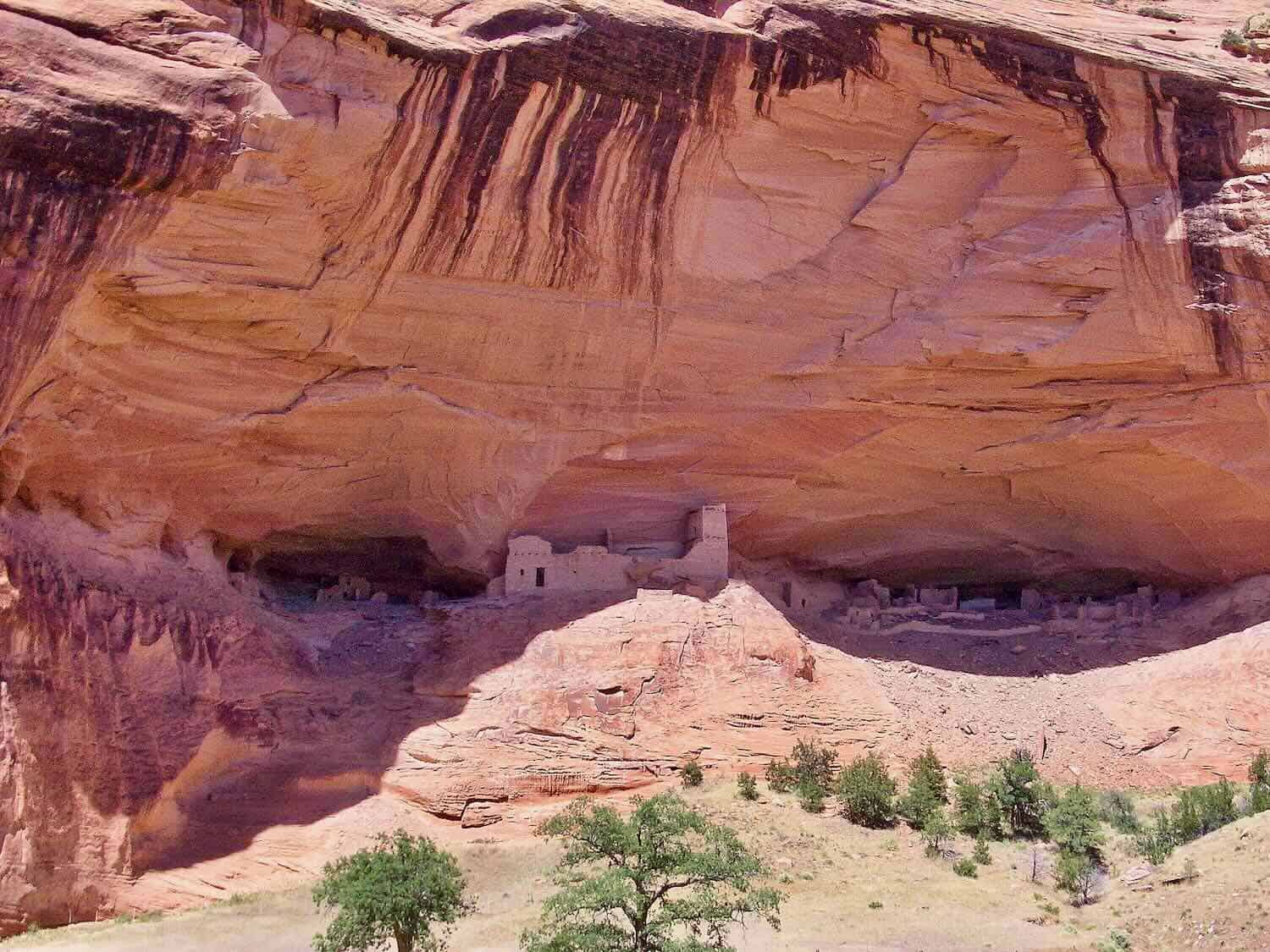
For an introduction to off-roading, Canyon de Chelly National Monument (official website) near Chinlé, Arizona, offers baby boomers easy to moderate driving challenges in a scenic setting. But you are not allowed to explore independently.
Driving into Canyon de Chelly requires joining an organized group that’s accompanied by a Navajo guide. Arranging for a private guide is another way to tour the canyon.
Alan and I explored Canyon de Chelly as part of a Jeep Jamboree USA tour. The experience reminded me of a cruise on land as we shared the canyon with 50 Jeeps.
Don’t have four-wheel-drive? Buy a ticket for one of the large open vehicles that Alan and I fondly call “shake and bakes.”
Booking a private excursion operated by one of the Navajo licensed guide companies is another option. Rather than driving, you’ll get to sit back and enjoy the ride.
Navajo Outfitters also offer hiking, camping and horseback riding adventures in the canyon.
A two-day discovery of Canyon de Chelly and her sister, Canyon del Muerto, initiated me to the fun of four-wheel-drive adventures—Alan is already an expert. It also introduced me to an intriguing adventure in the American Southwest that is well worth traveling out of your way to experience.
Canyon de Chelly Day One: White House Ruins and Spider Rock
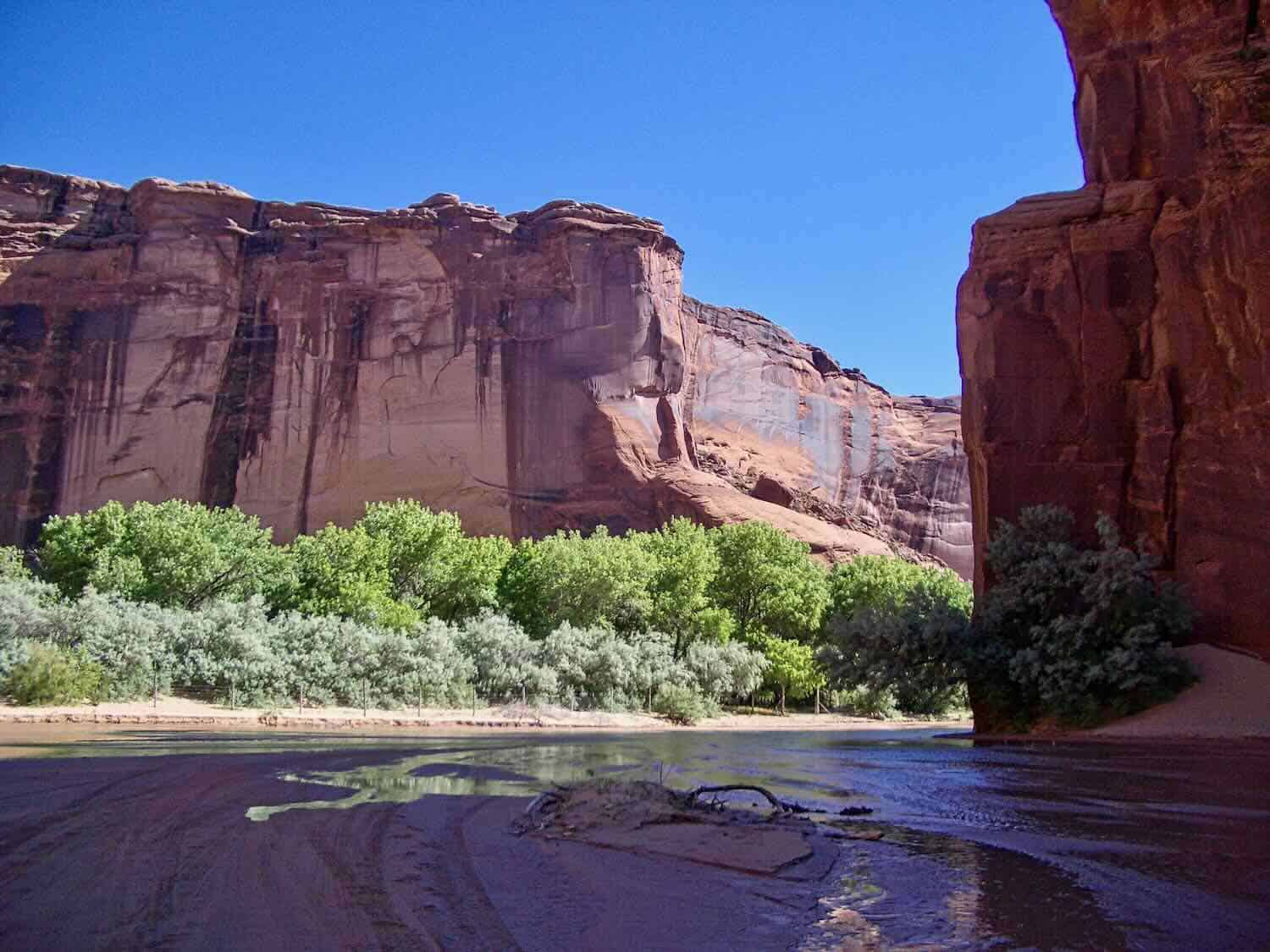
I question where we must be going as our Jeep Rubicon drives into Chinle Creek that flows through the canyon. Alan follows the 4-wheel-drive caravan through the flowing water and around a curve before exiting up a creek bank.
Accompanied by Navajo guide, Delbert Wilson, our group of four Jeeps learns about the canyon’s spiritual and cultural significance as the vehicles sway up the muddy bank of yet another creek crossing. Soon, we’re bouncing along the canyon floor next to the streaked, pink walls of sandstone cliffs.
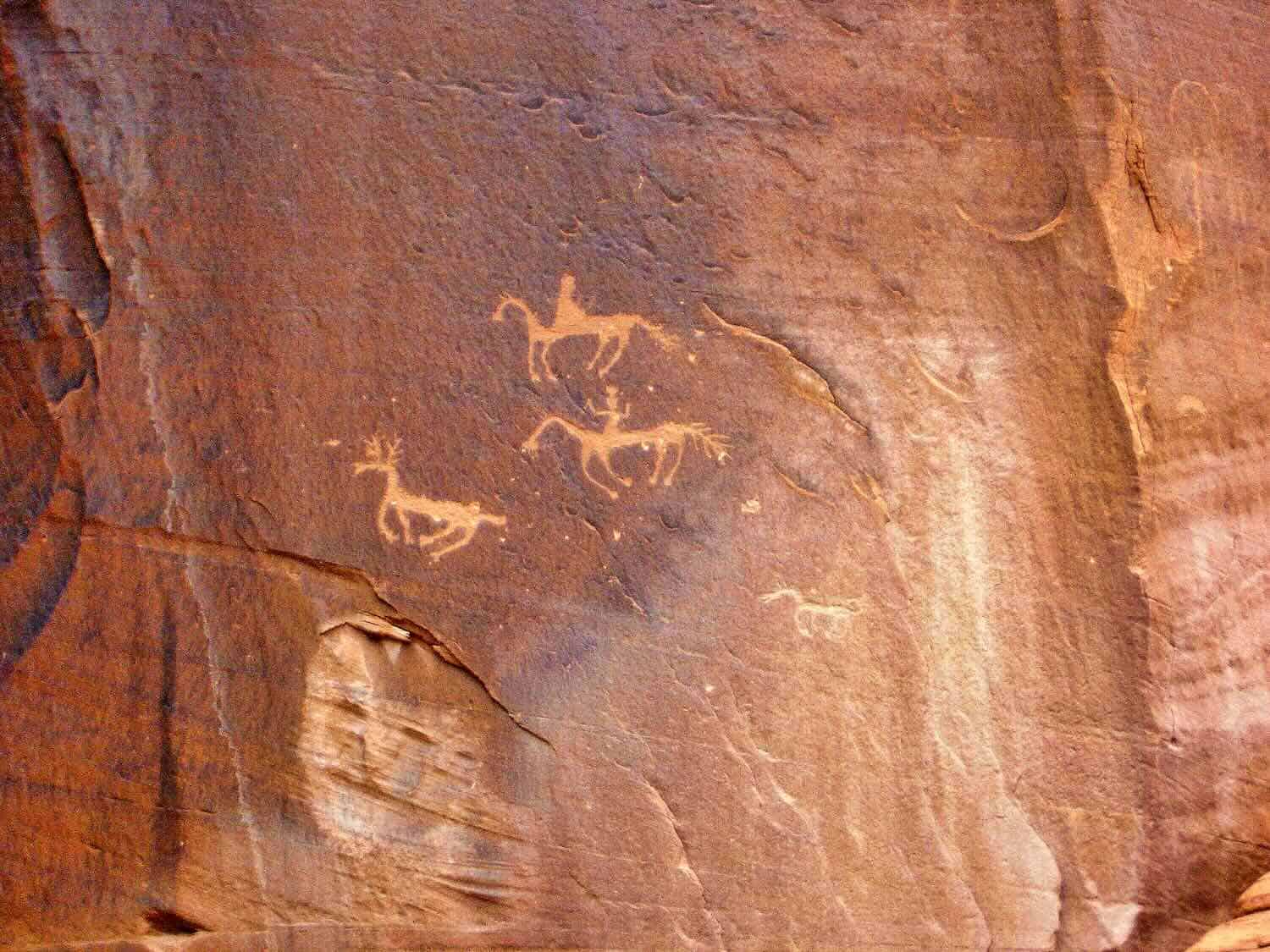
We stop to view and photograph petroglyphs that have been etched into the canyon wall. All total, there are more than 700 petroglyphs on the walls of Canyon de Chelly.
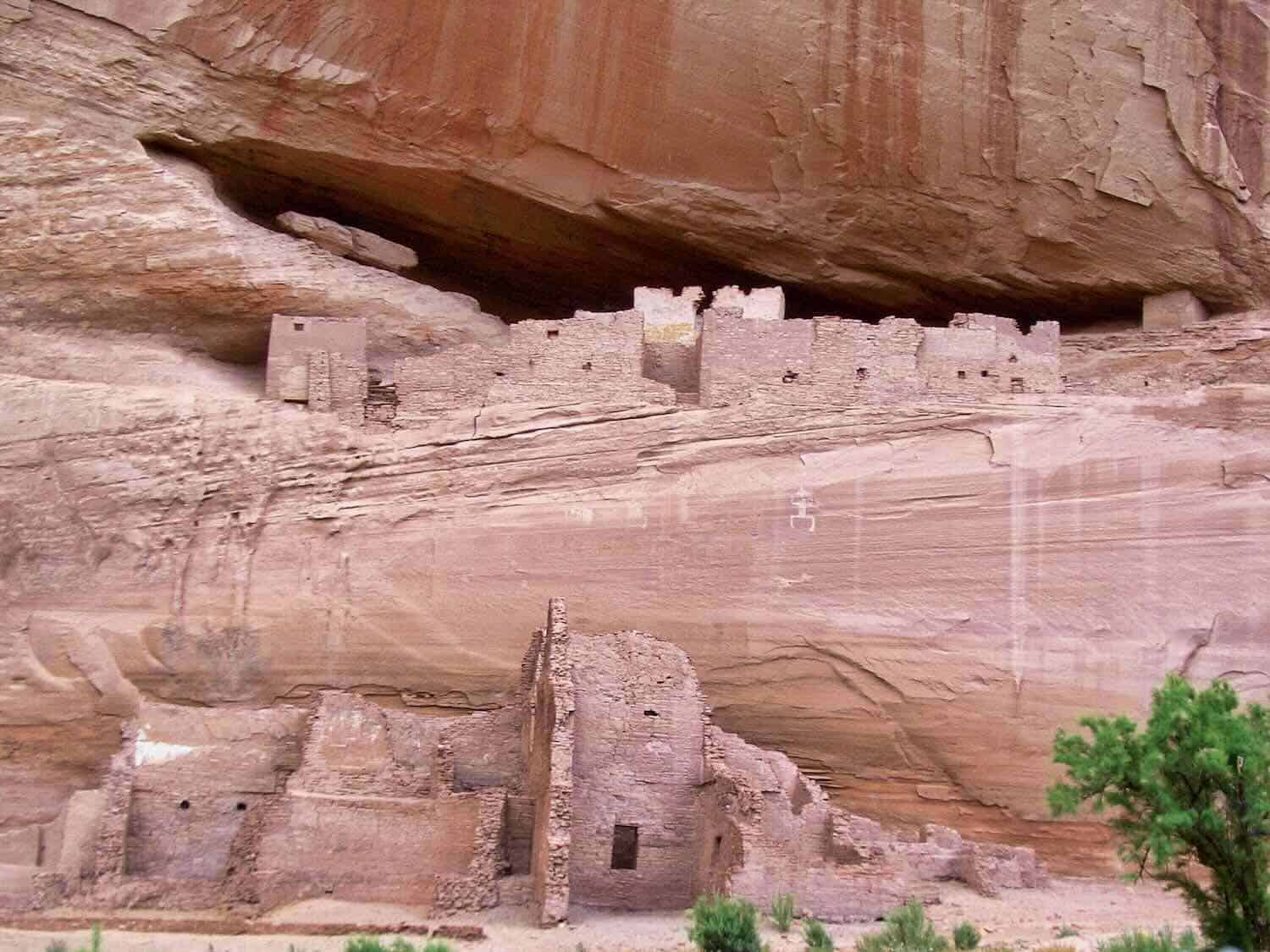
At White House Ruins, history whispers from the ancient cliff dwellings that once housed approximately 100 people. Researchers estimate that they inhabited White House Ruins from 1060 AD to 1275 AD.
Some visitors to the ruins arrive on foot via the 2.5-mile-round-trip White House Trail. The hike, which is accessed from White House Overlook on the South Rim Drive, travels 600 ft. down switchbacks to the floor of Canyon de Chelly. Check with the Visitors Center to confirm that the trail is open.
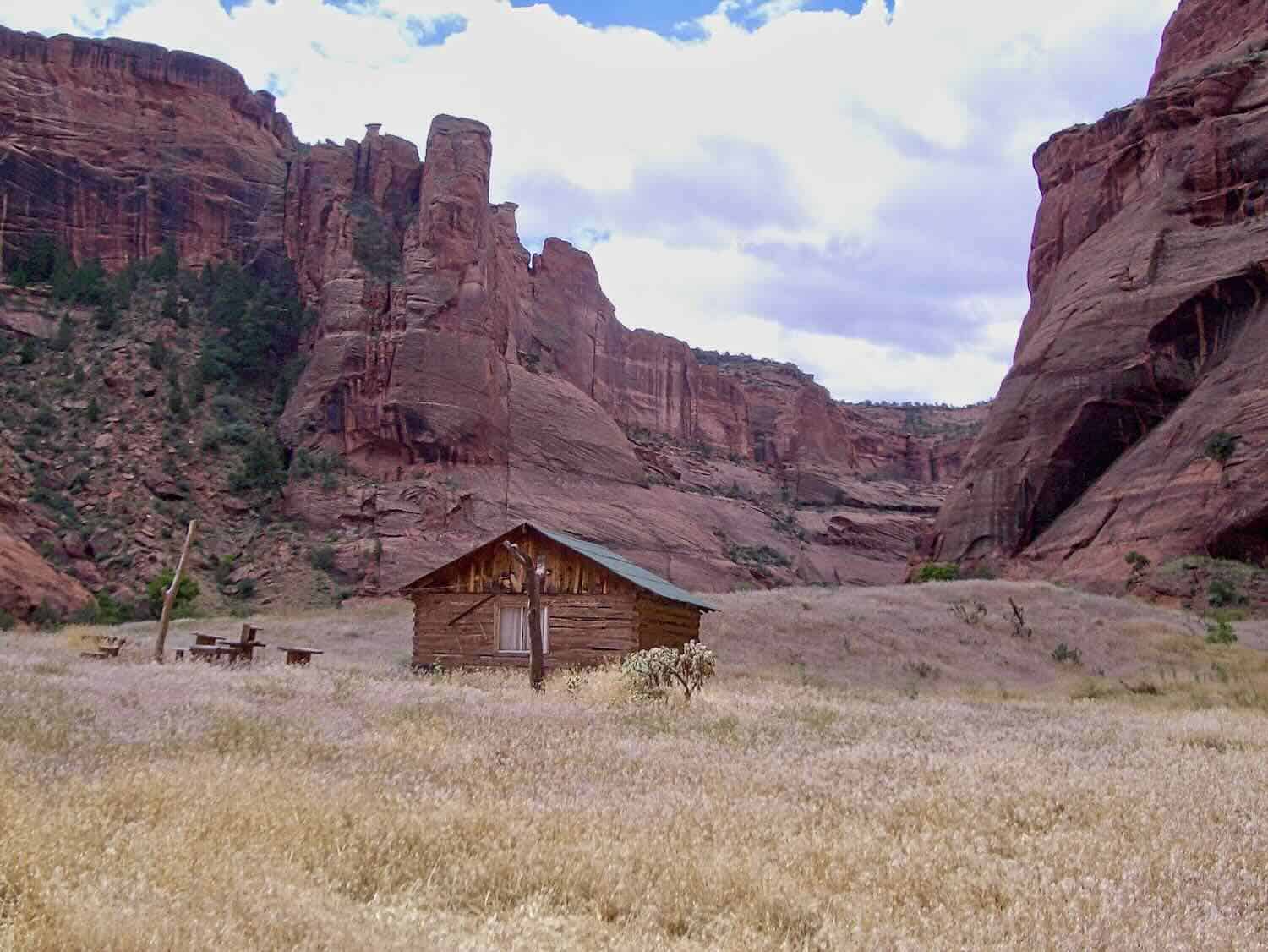
Continuing the drive, our group passes a hogan sitting in the middle of a grassy clearing. It’s a reminder that life still goes on in one of the longest continuously inhabited areas of North America.
In the summer, approximately 40 Navajo families consider Canyon de Chelly their summer home, growing crops and tending sheep. However a few families live here year round, enduring icy-harsh winter conditions.
BOOMER TRAVEL TIP
Take a look at our day hiking essentials before heading down the trail.
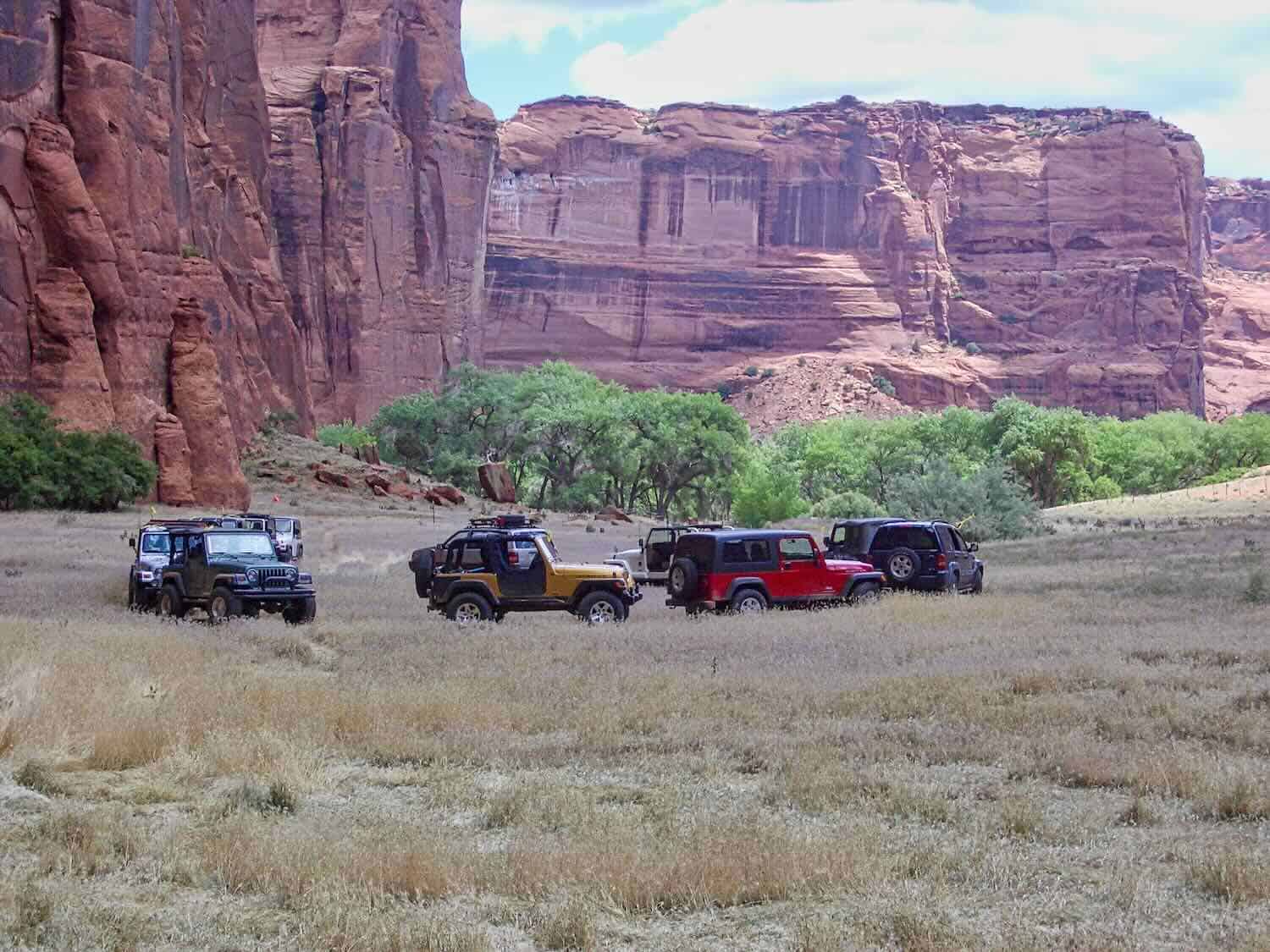
The Jeeps circle like a wagon train in a meadow near Spider Rock, an 800 ft. sandstone spire. Here, we relax with a picnic lunch as Delbert shares stories about his ancestors, including one about Spider Woman who lives at the top of Spider Rock’s tallest spire.
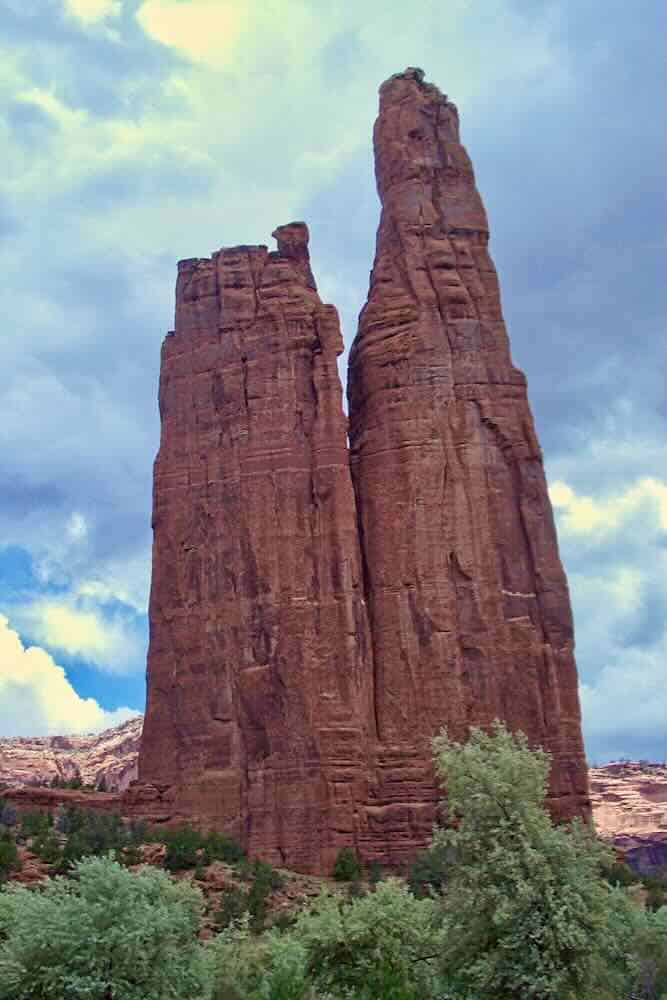
Navajo legend says that Spider Woman wove the web of the universe, teaching the Navajo how to weave. Tales of her darker side are used to discourage young children from misbehaving.
Canyon de Chelly Day Two: Canyon del Muerto and Mummy Cave
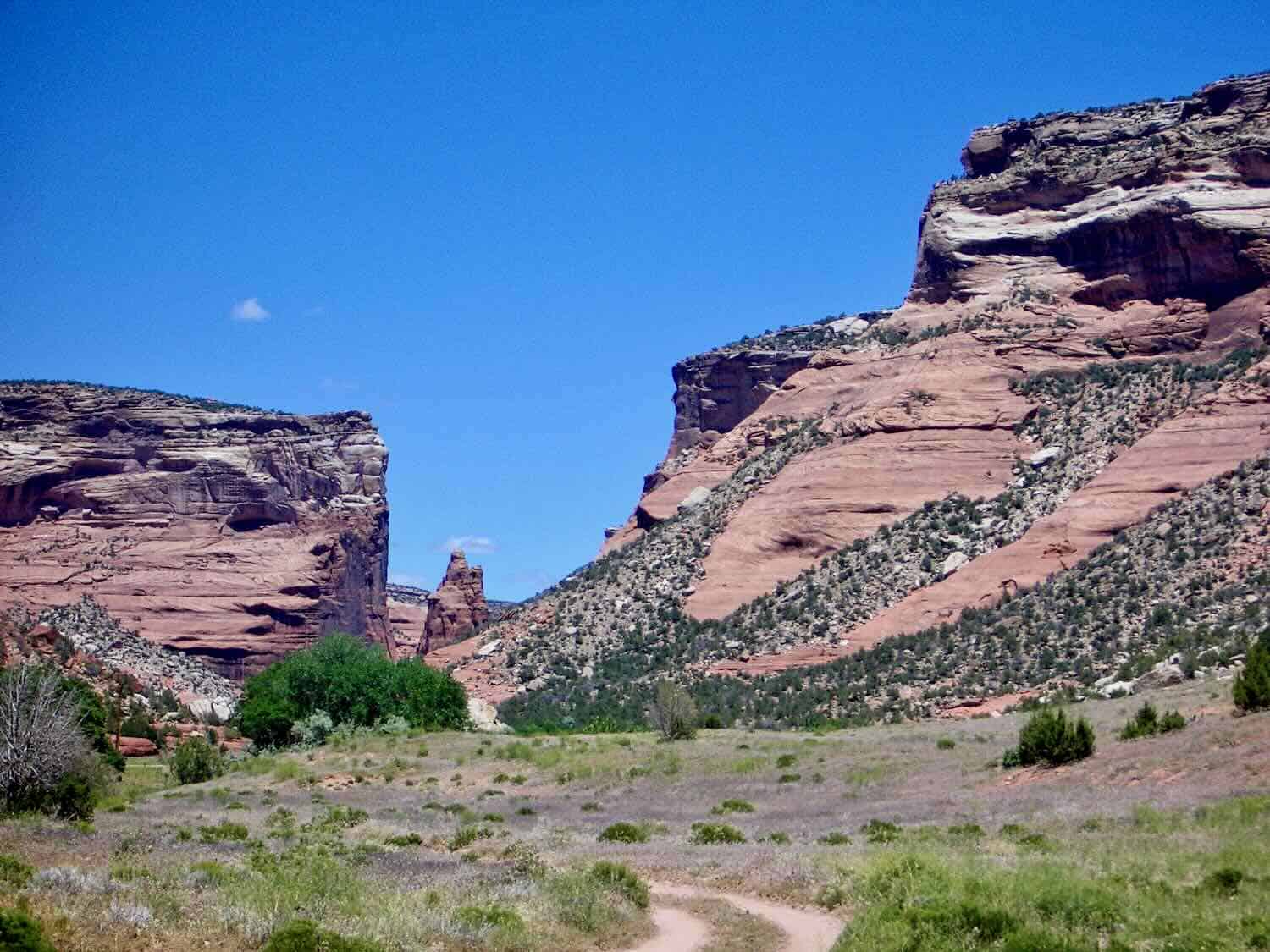
On the second day of exploring, our group retraces the tire tracks through Chinle Creek on a four-wheel-drive adventure that brings us to a fork in the road and into Canyon del Muerto.
The Jeep caravan winds its way past more ruins and petroglyphs that grace the walls of Canyon del Muerto. Antelope House Ruin and Mummy Cave are two of the most well known.
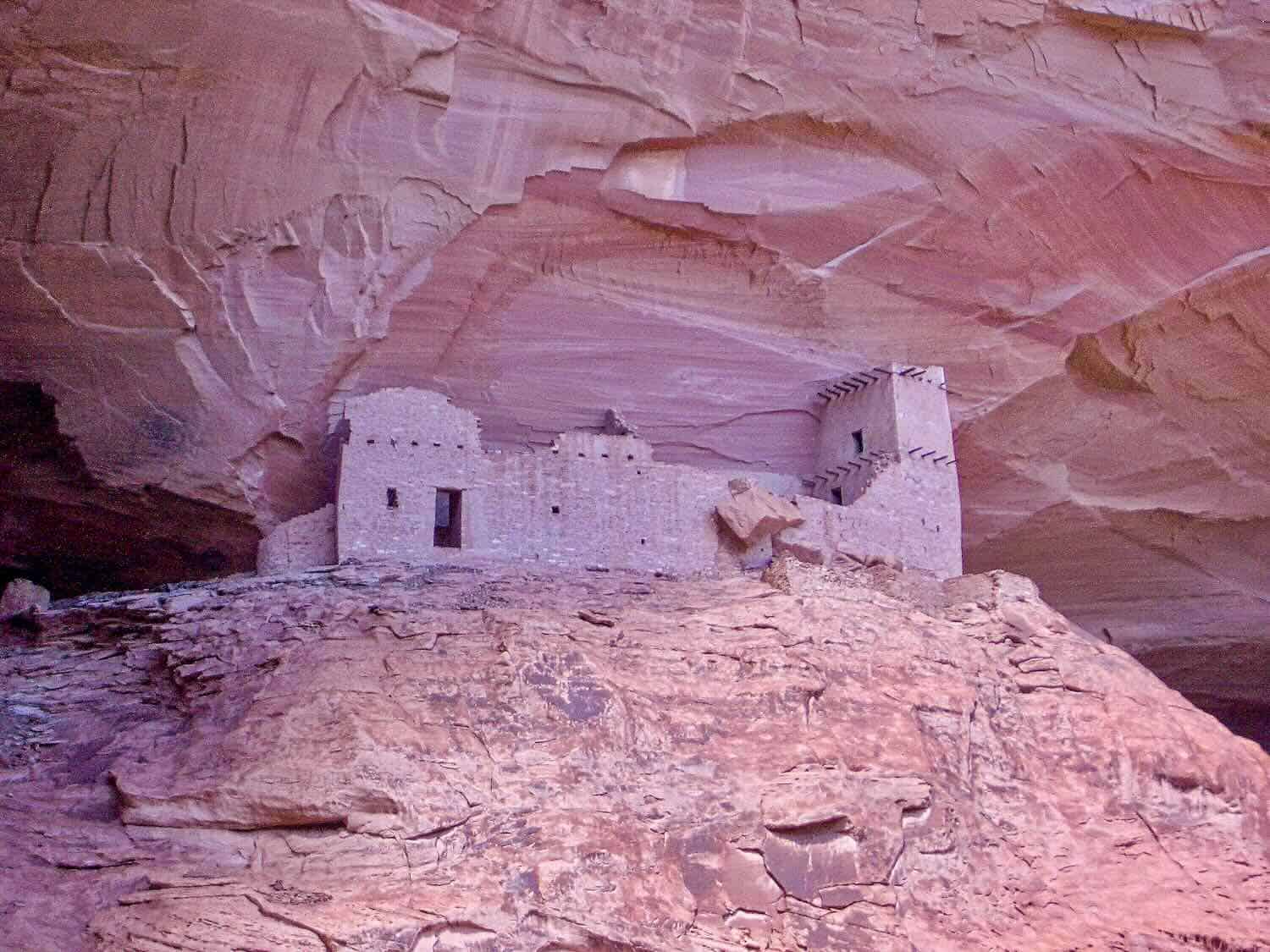
About 10 miles in, we make a long stop at my favorite, Mummy Cave. Sitting 300 ft. above the canyon floor, Mummy Cave consists of an eastern and western alcove. According to the National Park Service website, it is the “largest ancient largest ancient Puebloan village preserved in Canyon de Chelly.”
Scholars date the structures in the eastern alcove, which includes an impressive tower, from 300 to 400 A.D. A ledge connects the eastern cave to the western one. All total, 70 rooms and 3 kivas have been discovered at Mummy Cave.
Mummy Cave was occupied until approximately 1300. At that time, the Puebloan people who populated the area abruptly relocated, possibly due to drought conditions.
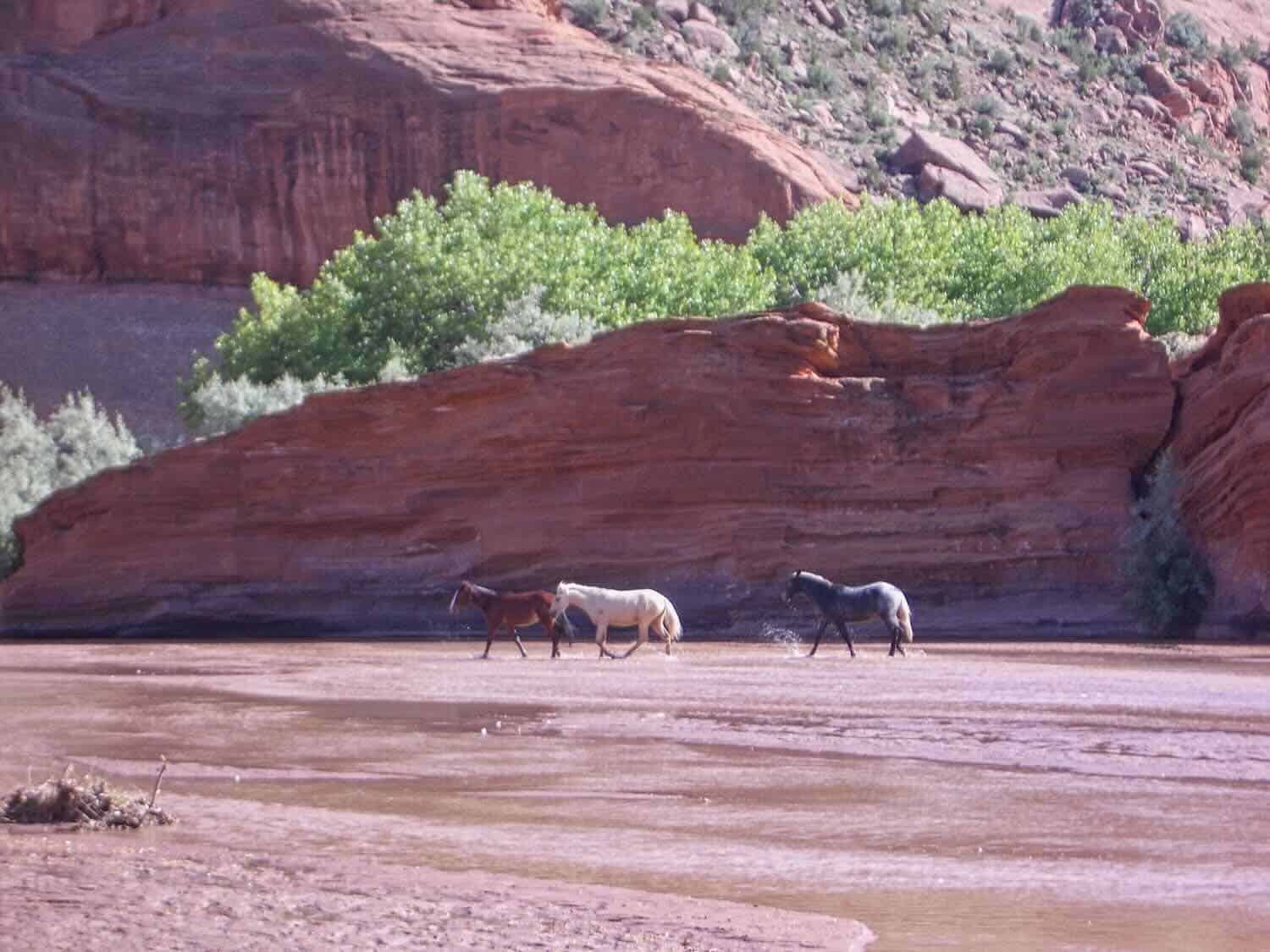
As we leave Canyon de Chelly, I spot horses running free in Chinlé Wash. The splash from their hooves hovers in the air like crystal jewels lit by a late afternoon sun. It’s the perfect ending to two days of an amazing boomer travel adventure.
BOOMER TRAVEL TIP
Looking for a national park book? Do we have a list for you! From guides to fiction with national park settings, you’re sure to find something to read. Check out 52 Best National Park Books.
Rim Drives at Canyon de Chelly

Drives on the north and south rim of Canyon de Chelly National Monument do not require any fee, guide or permit. After exploring inside the canyon, driving along the rim offers a fun perspective of where you’ve been.
South Rim Drive
Starting at the Visitor Center, the 36-mile round-trip South Rim drive (best for afternoon photos) includes seven overlooks. At White House Overlook, it’s possible to hike the White House trail (if it’s open) into the canyon to White House Ruins. The road ends at Spider Rock Overlook where you’ll enjoy spectacular Canyon de Chelly views.
North Rim Drive
The 26-mile round-trip North Rim Drive (best for morning photos) begins at the Visitor Center. Overlooks include Antelope House, Mummy Cave, and Massacre Cave. You’ll be sharing the road with free range livestock so be careful.
BOOMER TRAVEL TIP
Check out more of our national park travel ideas.
Where to Stay at Canyon de Chelly
We stayed at Best Western Canyon de Chelly Inn in Chinle.
Thunderbird Lodge is the only lodging located within Canyon de Chelly. Operated by the Navajo Nation Hospitality Enterprise, the lodge includes an historic trading post. Don’t miss shopping for Navajo rugs, crafts and jewelry.
Holiday Inn Canyon de Chelly is another Chinle option.
How to Get to Canyon de Chelly
From Kayenta, Arizona (near Monument Valley) it’s 87 miles to Canyon de Chelly. Go east on Hwy. 160, then right on Route 59 (toward Chinle), then left on Hwy. 191 (south). Visitor center is 3 miles from Route 191 (in Chinle).
Driving From Flagstaff, AZ, you’ll travel 188 miles on a route that begins on I-40 East, then Hwy. 191 (north).
From Gallup, NM (142 miles), drive Hwy. 264 to Hwy. 191 (north).
